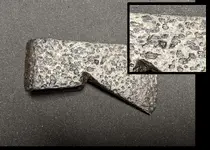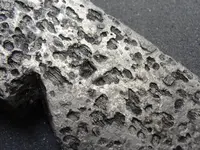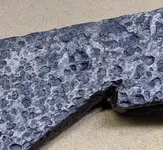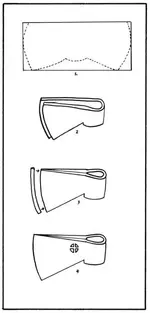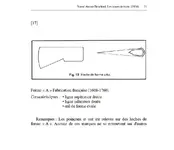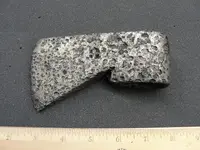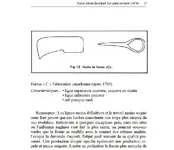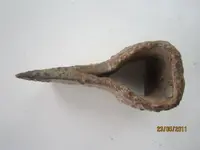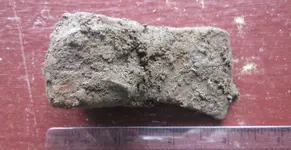paleomaxx
Hero Member
- Joined
- Aug 14, 2016
- Messages
- 841
- Reaction score
- 6,888
- Golden Thread
- 6
- Location
- Upstate, NY
- 🥇 Banner finds
- 6
- Detector(s) used
- Deus XP
- Primary Interest:
- All Treasure Hunting
I actually recovered this some weeks back, but between the preservation research it's taken me awhile to put this together. The research was especially thorough because I know quite a few hatchets can resemble trade axes, and true Biscayne trade axes are quite rare. But against all odds it appears I've found the real deal!
I was doing some more gridding around where I found all those IHPs and seated dimes last year. Clearly a Victorian campsite of some sort, but I was hoping for some more coins so I gridded much further away from the main scatter this time. No luck on more coins and almost nothing in the soil besides a couple oxe shoes and a modified conestoga bell. When I pulled the axe head out of the ground it appeared to be just another 19th century iron relic so I put it in the bag with the rest and continued on my way. It wasn't until I cleaned everything up and took a closer look that I started to suspect that I had found a much older piece.
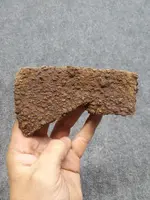
Even for a 19th century piece of iron, the rusting on this axe head would have been fairly minor. This flat area is raised above the nearby river by a good 10-20 feet and almost entirely sandy soil so I suspect any water runs off quickly. It's quite fortunate because otherwise I would never have spotted the faint four lobed mark imprinted into the surface.
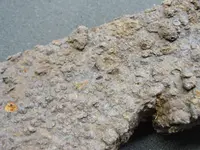
The touchmark combined with the odd shape is what jogged my memory and made me start to think that I had found a trade axe. But to be sure I would have to clean off the rust and if this was in fact a trade piece I wanted to do so in a way that would preserve as much metal as possible and prevent any future corrosion.
So into the electrolysis tank it would have to go!
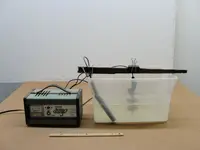
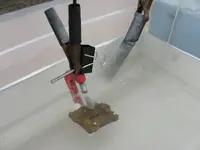
I actually built one specifically for this piece. I wanted to be able to check on it frequently and control the treatment rate carefully so only one carbon electrode and a relatively small bath. After testing it on a few less important pieces it was ready for the crucial relic.
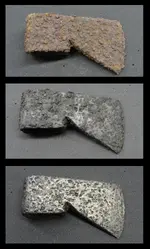
The above progression photos are of the axe head at the start, midway, and at the end. Lots of pitting, which is expected, but incredibly some of the original flat surface survived! I also found that both sides of the trade axe have the same touchmark. After I scrubbed off all the carbon deposits and was sure that absolutely no rust remained, I put it in hot wax (300 F) for well over an hour. Once no more bubbles were emanating from the piece it was finally done:
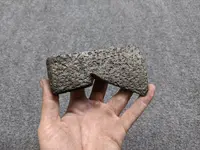
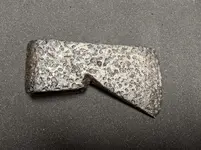
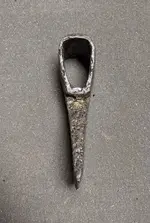
The result is an incredible artifact and I'm certain that this is a trade piece as opposed to a later reproduction. The touchmark matches number 3 in the below table which is from the reference book, Les Armes de Traité. It also has the correctly shaped eye that's produced from the very specific blacksmith method for manufacturing them.
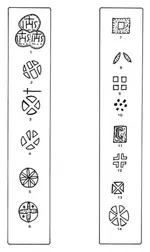
Trade axes like these were made starting in the 16th century and production continued until the early 18th century. However the style of construction changed over the centuries so they can be somewhat dated by the profile shape of the blade. Also of interesting note is that this particular touchmark is found most associated with Oneida tribe sites and between the approximate dates of 1575 and 1670. Kind of amazing to think that this could be a 16th century piece, although I think it's more likely mid 17th century.
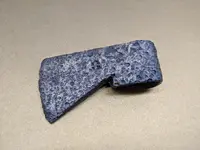
I found this on the East side of the Hudson, but many miles up a tributary. I suspect it wasn't directly traded for in this area, but rather made it's way down from the St. Lawrence Seaway. Must have been an incredible journey back when the land was entirely primordial forests. Even if this originated in Montreal, it still would have been more than 250 miles on foot or by canoe to get to where I found it. I've known there was indigenous activity in this area for awhile and the field almost directly across the river is where I found my first and second stone points! But even still, finding a trade axe is more than I could have hoped for!
An incredible piece of history, one that I never expected to uncover, and certainly my best iron relic to date!
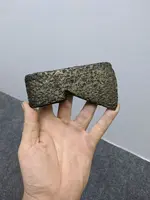
I was doing some more gridding around where I found all those IHPs and seated dimes last year. Clearly a Victorian campsite of some sort, but I was hoping for some more coins so I gridded much further away from the main scatter this time. No luck on more coins and almost nothing in the soil besides a couple oxe shoes and a modified conestoga bell. When I pulled the axe head out of the ground it appeared to be just another 19th century iron relic so I put it in the bag with the rest and continued on my way. It wasn't until I cleaned everything up and took a closer look that I started to suspect that I had found a much older piece.

Even for a 19th century piece of iron, the rusting on this axe head would have been fairly minor. This flat area is raised above the nearby river by a good 10-20 feet and almost entirely sandy soil so I suspect any water runs off quickly. It's quite fortunate because otherwise I would never have spotted the faint four lobed mark imprinted into the surface.

The touchmark combined with the odd shape is what jogged my memory and made me start to think that I had found a trade axe. But to be sure I would have to clean off the rust and if this was in fact a trade piece I wanted to do so in a way that would preserve as much metal as possible and prevent any future corrosion.
So into the electrolysis tank it would have to go!


I actually built one specifically for this piece. I wanted to be able to check on it frequently and control the treatment rate carefully so only one carbon electrode and a relatively small bath. After testing it on a few less important pieces it was ready for the crucial relic.

The above progression photos are of the axe head at the start, midway, and at the end. Lots of pitting, which is expected, but incredibly some of the original flat surface survived! I also found that both sides of the trade axe have the same touchmark. After I scrubbed off all the carbon deposits and was sure that absolutely no rust remained, I put it in hot wax (300 F) for well over an hour. Once no more bubbles were emanating from the piece it was finally done:



The result is an incredible artifact and I'm certain that this is a trade piece as opposed to a later reproduction. The touchmark matches number 3 in the below table which is from the reference book, Les Armes de Traité. It also has the correctly shaped eye that's produced from the very specific blacksmith method for manufacturing them.

Trade axes like these were made starting in the 16th century and production continued until the early 18th century. However the style of construction changed over the centuries so they can be somewhat dated by the profile shape of the blade. Also of interesting note is that this particular touchmark is found most associated with Oneida tribe sites and between the approximate dates of 1575 and 1670. Kind of amazing to think that this could be a 16th century piece, although I think it's more likely mid 17th century.

I found this on the East side of the Hudson, but many miles up a tributary. I suspect it wasn't directly traded for in this area, but rather made it's way down from the St. Lawrence Seaway. Must have been an incredible journey back when the land was entirely primordial forests. Even if this originated in Montreal, it still would have been more than 250 miles on foot or by canoe to get to where I found it. I've known there was indigenous activity in this area for awhile and the field almost directly across the river is where I found my first and second stone points! But even still, finding a trade axe is more than I could have hoped for!

An incredible piece of history, one that I never expected to uncover, and certainly my best iron relic to date!

Upvote
41



